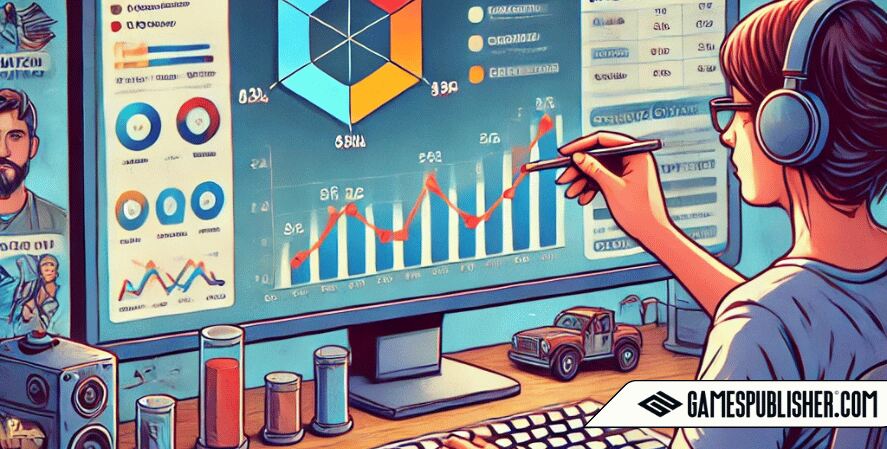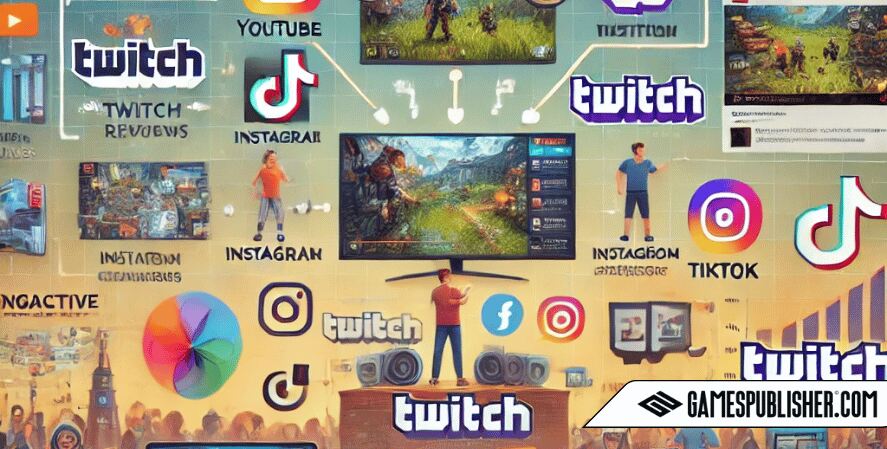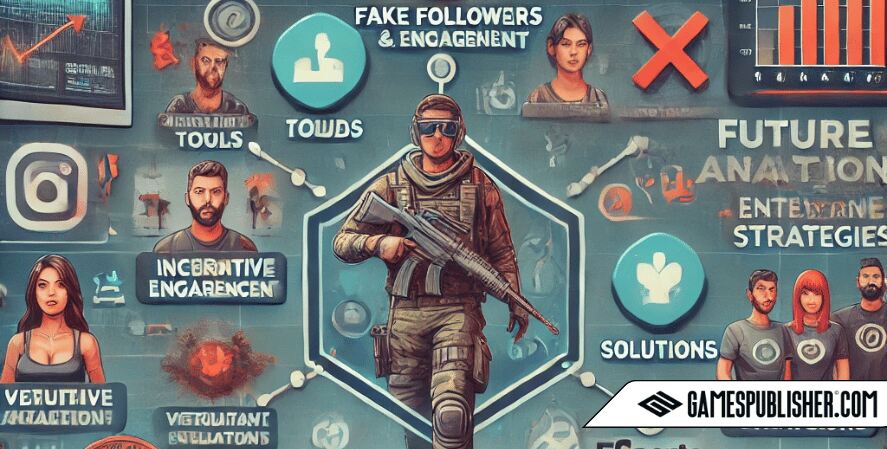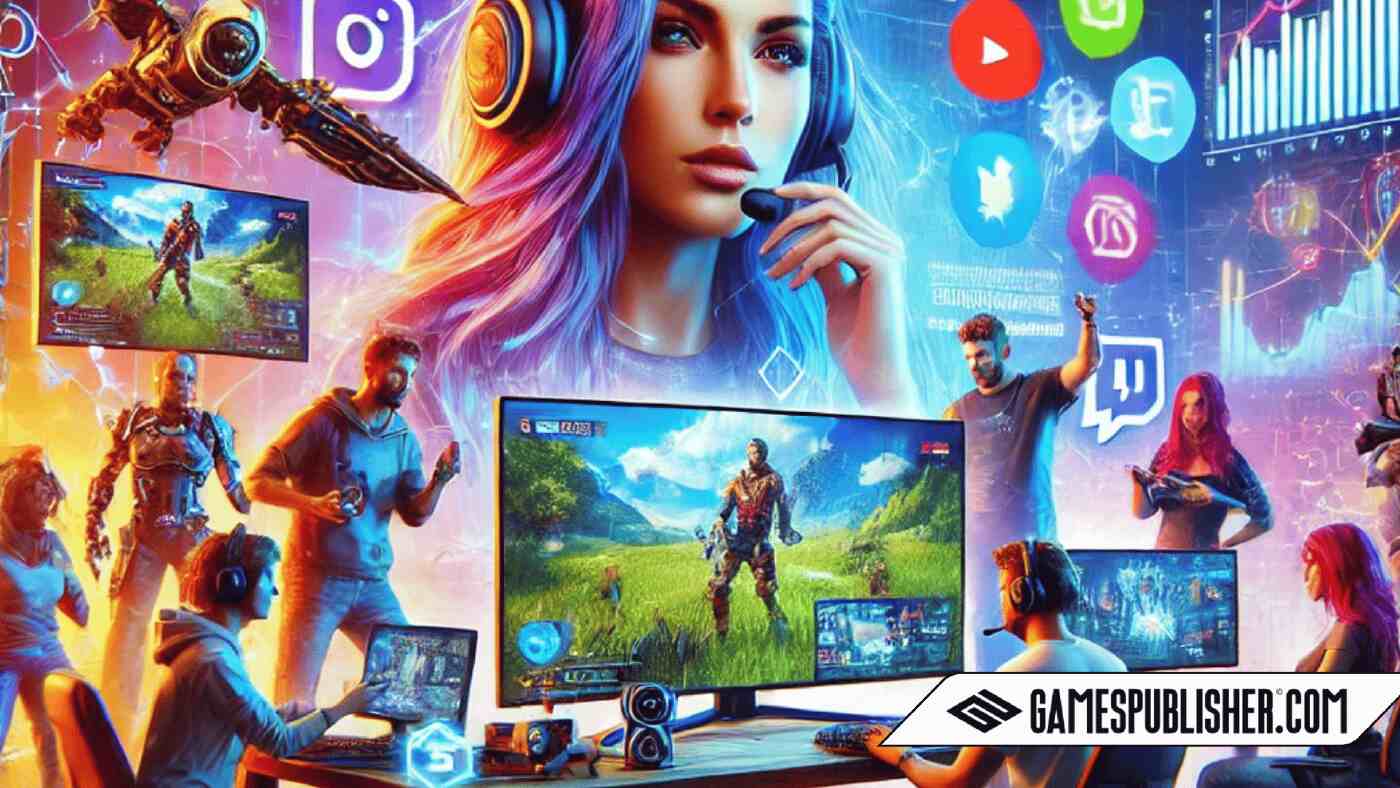Today’s digital world relies on influencer marketing. It is crucial for game ads. Influencers have reach and authenticity. Game makers can use these qualities to reach a wider audience. This guide explains how to use influencers to promote games. It shares insights from top resources, such as Gamespublisher.com.
Understanding Influencer Marketing

Definition and Overview
Influencer marketing is the strategy of partnering with popular social media personalities. They promote products, services, or brands.
The gaming industry has adopted this approach. Its use has surged in popularity. It has moved from old ads to lively content. Influencers create this content. Influencers on platforms like YouTube, Twitch, and Instagram create this content.
Types of Influencers
Their follower count categorizes influencers.
- Mega Influencers: It has over a million followers. This provides a wide reach, but less personal connection.
- Macro Influencers: have 100,000 to a million followers. They strike a balance between reach and engagement.
- Micro Influencers: 10,000 to 100,000 followers, with high engagement and cost-effectiveness.
- Nano Influencers: Fewer than 10,000 followers, providing niche market influence and authenticity.
Each type has its benefits and drawbacks. These affect their suitability for different campaign goals.
The Role of Influencers in Game Advertising

Building Trust and Credibility
Influencers build trust through consistent, authentic content. Their recommendations carry weight, especially in gaming, where community trust is paramount. This credibility can make or break a game’s success.
Engaging and Authentic Content
Influencers excel at creating engaging, relatable content. They produce gameplay videos, live streams, and reviews that resonate with their followers. For example, YouTube had successful collaborations. PewDiePie promoted games, such as “Among Us.”
Identifying the Right Influencers

Research and Selection
To find the right influencers:
- Identify your target audience: know the demographics and interests of your target audience.
- Research Influencers: Use sites like Gamespublisher.com, Social Blade, and HypeAuditor. Use them to find good influencers.
- Evaluate Fit: Check content quality, engagement rates, and follower demographics.
Metrics to Consider
Key metrics include:
- Engagement Rate: The level of interaction on posts.
- Follower Demographics: Age, gender, location, and interests.
- Content Quality: Relevance and production value.
Strategies for Successful Influencer Campaigns

Setting Clear Goals and Objectives
Define your campaign goals, such as:
- Brand Awareness: Increase visibility.
- Engagement: Boost interactions and discussions.
- Downloads/Purchases: Drive game installations or sales.
Align these goals with what influencers do best. This makes for effective campaigns.
Creative Collaboration
Collaborate effectively by:
- Providing Creative Freedom: Allow influencers to maintain their unique style.
- Offering Guidance: Share key messages and goals without being overly prescriptive.
Twitch streamers use viewer interactions to create innovative campaigns. This demonstrates how creative teamwork can be beneficial.
Budgeting and Negotiation
Set a campaign budget by:
- Allocating Funds: Distribute funds based on influencer reach and engagement.
- Negotiating Fairly: Be transparent about expectations and offer fair compensation.
Long-term partnerships can offer better rates. They also offer more consistent promotion.
Maximizing Reach and Engagement

Multi-Platform Campaigns
Promote across platforms like:
- YouTube: Long-form content and reviews.
- Twitch: Live streaming and engagement.
- Instagram: Visual posts and short videos.
- TikTok: Viral content and trends.
Community Engagement
Enhance engagement by:
- Encouraging User-Generated Content: Get followers to create and share related content.
- Interactive Campaigns: Use polls, Q&A sessions, and live interactions.
Measuring Success and ROI

Tracking and Analytics
Track performance with tools like Google Analytics and Social Blade. Key performance indicators (KPIs) include:
- Engagement Rate: Interaction levels.
- Reach and Impressions: Audience size.
- Conversion Rate: Percentage of desired actions taken by the viewers.
Analyzing Results
Compare actual performance against goals. Analyze data to interpret the results. Utilize case studies to demonstrate successes and areas for improvement.
Challenges and Solutions

Common Challenges
Challenges include:
- Fake Followers: Inflated follower counts.
- Inconsistent Engagement: Variable interaction levels.
Solutions involve using verification tools and selecting influencers with consistent engagement.
Future Trends
Emerging trends include:
- Virtual Influencers: AI-generated personas.
- Interactive Content: Enhanced live stream interactions.
- Esports Collaborations: Partnerships with esports figures and teams.
The future will have better analytics. They will be more tailored.
Conclusion
Influencer marketing gives game makers a strong tool. It helps them reach new customers. It helps them to promote their games. Understanding types of influencers is key. Setting clear goals can help gaming companies.
They can reach and engage their target audience. They can do this by fostering creative collaborations. Resources like Gamespublisher.com provide more support for successful strategies.
Embracing influencer marketing can drive significant benefits. It boosts brand visibility, engagement, and sales. Therefore, it is a key part of modern gaming advertising.
Loading survey...

